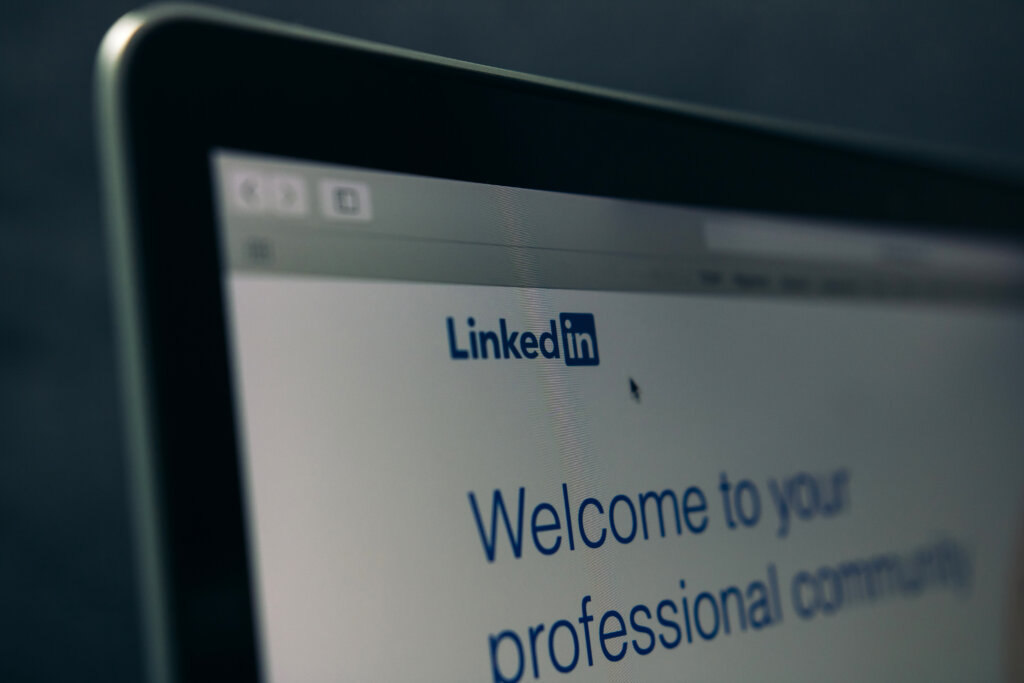B2B marketing is pivotal in driving business growth and success in the ever-evolving digital landscape.
With the constant shift in consumer behavior, companies must adapt and develop strategies to effectively target, engage, and convert potential clients. B2B marketing focuses on building relationships with other businesses, promoting products or services, and generating leads and revenue.
LinkedIn has emerged as a dominant force in B2B marketing, offering a comprehensive platform that connects professionals and facilitates networking opportunities.
With over 774 million members and an environment tailored to business professionals, LinkedIn provides an unparalleled channel for companies to reach their target audience, establish credibility, and foster meaningful connections. By leveraging LinkedIn’s unique features and tools, businesses can optimize their marketing efforts and unlock the true potential of B2B marketing.
Benefits of using LinkedIn for B2B marketing
LinkedIn provides a unique platform where professionals and decision-makers gather, making it the perfect environment for B2B marketing. By establishing a presence on LinkedIn, businesses can connect with a vast network of potential clients actively seeking solutions, partnerships, and opportunities to grow their own companies.
Enhanced Targeting Options
LinkedIn’s advanced targeting options allow businesses to reach their target audience precisely. Marketers can utilize demographic information, job titles, company size, industry, and other criteria to create highly targeted campaigns that resonate with their desired prospects, leading to increased engagement and conversion rates.
Improved Credibility and Brand Image
A robust LinkedIn presence can significantly enhance a company’s credibility and brand image in the eyes of potential clients. Businesses can position themselves as thought leaders and trusted partners in their respective fields by sharing valuable content, demonstrating industry expertise, and engaging with followers.
Effective Lead Generation and Nurturing
LinkedIn offers various features and tools, such as Sponsored Content, InMail, and Sales Navigator, facilitating lead generation and nurturing efforts. By leveraging these resources, businesses can identify, engage, and build relationships with high-quality leads, ultimately guiding them through the sales funnel and converting them into clients.
Networking Opportunities with Industry Leaders
One of the key benefits of LinkedIn is the ability to connect with industry leaders, influencers, and decision-makers. By participating in LinkedIn groups, engaging in discussions, and establishing connections with key players, businesses can expand their network, gain valuable insights, and forge strategic partnerships that contribute to their overall growth and success.
Engage in discussions, share knowledge and expertise, and establish connections with key players. Emphasize the benefits of being active in LinkedIn groups for B2B marketing success.
Optimizing Your LinkedIn Presence for B2B Marketing
LinkedIn has become an essential platform for B2B marketing, connecting professionals and businesses in a unique environment tailored to their needs. By optimizing your LinkedIn presence, you can effectively reach your target audience, generate leads, and drive business growth.
Building a Strong Company Profile
A well-crafted company profile is the foundation of your LinkedIn marketing efforts. Focus on these key elements:
High-quality branding elements: Use professional, high-resolution images for your logo and cover photo to create a strong visual impression.
Compelling company description: Write a concise, engaging description that highlights your company’s mission, expertise, and unique selling points. Use relevant keywords to improve visibility in search results.
Showcase pages for products and services: Create dedicated pages to highlight your key offerings, providing detailed information and multimedia content to engage visitors.
Creating and Sharing Valuable Content
Providing valuable content is crucial for establishing credibility and engaging your audience. Consider these content types:
Industry insights and thought leadership: Share your expertise through articles, whitepapers, or presentations that address industry trends and challenges.
Engaging posts and articles: Publish informative and entertaining content that encourages interaction, such as polls, questions, or success stories.
Visual content and rich media: Use eye-catching images, videos, or infographics to convey information and make your content stand out.
Post consistently, use hashtags, tag relevant individuals or companies, and respond to comments and messages to maximize engagement.
Utilizing LinkedIn Advertising Tools
LinkedIn offers a range of advertising options to amplify your reach and target specific audiences:
Sponsored Content: Promote your posts to reach a broader audience, targeting based on demographics, job titles, or industries.
Sponsored InMail: Send personalized messages directly to your target audience’s inboxes, ensuring high visibility and engagement.
Dynamic Ads: Create personalized ads that automatically adjust to display information relevant to each viewer, such as their job title or company name.
Display Ads: Run banner ads on LinkedIn to increase brand awareness and drive traffic to your website or landing pages.
For each advertising option, set a budget, monitor performance, and adjust your strategy to maximize ROI.
Participating in LinkedIn Groups
LinkedIn groups offer valuable networking opportunities and a platform for sharing knowledge:
Engaging in discussions: Actively participate in group discussions by asking questions, offering solutions, or sharing insights.
Sharing knowledge and expertise: Contribute valuable content to the group, positioning yourself as a thought leader and resource for others.
Establishing connections with key players: Connect with group members who share your interests or work in your industry, fostering relationships that can lead to collaboration or business opportunities.
By following these best practices, you can optimize your LinkedIn presence for B2B marketing and unlock the full potential of this powerful platform.
Measuring the Success of Your LinkedIn B2B Marketing Efforts
To ensure your LinkedIn B2B marketing efforts are effective, tracking performance and making data-driven adjustments to your strategy is crucial. Here’s how:
Tracking Key Performance Indicators (KPIs)
Monitor these essential KPIs to gauge the success of your LinkedIn B2B marketing initiatives:
Engagement metrics: Track likes, comments, shares, and clicks on your posts to measure audience interaction with your content. High engagement indicates that your content resonates with your target audience.
Conversion rates: Monitor the percentage of leads who take a desired action, such as signing up for a newsletter, downloading a whitepaper, or making a purchase. Higher conversion rates signal an effective marketing strategy.
ROI: Calculate the return on investment by comparing the revenue generated from your LinkedIn marketing campaigns to the total costs involved. A positive ROI demonstrates that your efforts are driving tangible results.
Using LinkedIn Analytics
LinkedIn Analytics provides valuable insights into your company page performance:
Follower demographics: Analyze the demographics of your followers, including their job titles, industries, and locations, to ensure you’re reaching your target audience.
Content performance: Review the performance of your posts, articles, and showcase pages to identify the types of content that generate the most engagement and conversions.
Visitor data: Examine the number of unique visitors, page views, and visitor behavior on your company and showcase pages to understand how users interact with your content.
Continuously Refining Your Strategy Based on Data-Driven Insights
Use the data gathered from KPI tracking and LinkedIn Analytics to make informed decisions about your marketing strategy:
Adjust your content strategy: Identify the content types and topics that generate the most engagement and conversions, and create more of what works.
Optimize your targeting: Refine your audience targeting based on follower demographics and visitor data to ensure reaching the right prospects.
Improve your advertising efforts: Analyze the performance of your LinkedIn ads and sponsored content to identify areas for improvement, such as ad creative, targeting, or budget allocation.
By continuously monitoring and refining your LinkedIn B2B marketing strategy, you’ll maximize your success and drive sustainable business growth.
Conclusion
In summary, LinkedIn offers numerous benefits for B2B marketing, including:
1. Access to a professional audience, connecting you with potential clients and decision-makers.
2. Enhanced targeting options that allow for precise audience segmentation and better engagement.
3. Improved credibility and brand image by showcasing your company’s expertise and thought leadership.
4. Effective lead generation and nurturing tools that drive conversions and business growth.
Networking opportunities with industry leaders can lead to valuable insights and strategic partnerships.
By optimizing your LinkedIn presence and leveraging the platform’s unique features, you can significantly enhance your B2B marketing efforts and drive meaningful results. Embrace the power of LinkedIn as part of your overall marketing strategy, and unlock new opportunities for growth and success for your company.
About The Author
Rehj
With over 15 years of experience in copywriting, Rehj has established a reputation as a highly skilled and talented wordsmith. Rehj has honed their craft throughout her career, consistently producing top-quality content for various audiences and industries.
Her ability to understand their target audience, craft compelling narratives, and write in a style that resonates with their audience has made them a sought-after copywriter in their field. Rehj’s passion for writing and commitment to producing top-notch content has driven their success and established them as a trusted voice in copywriting.







